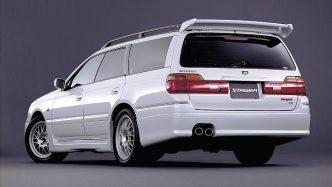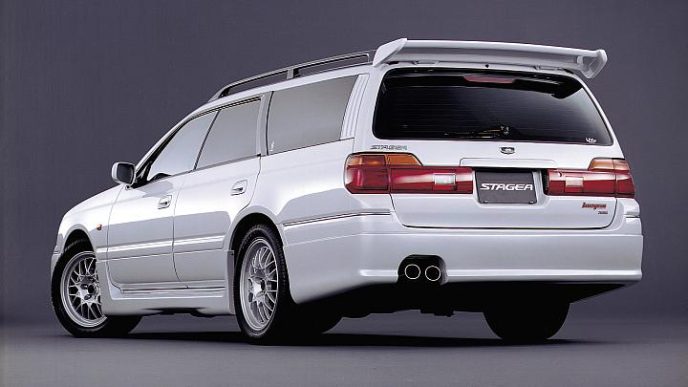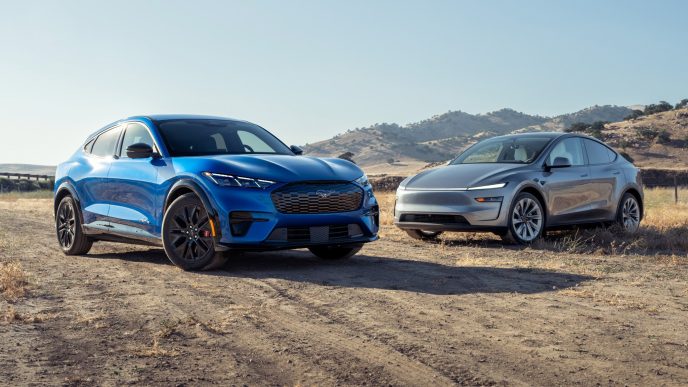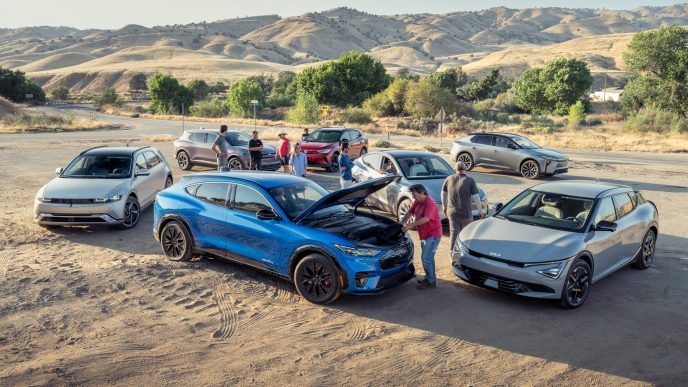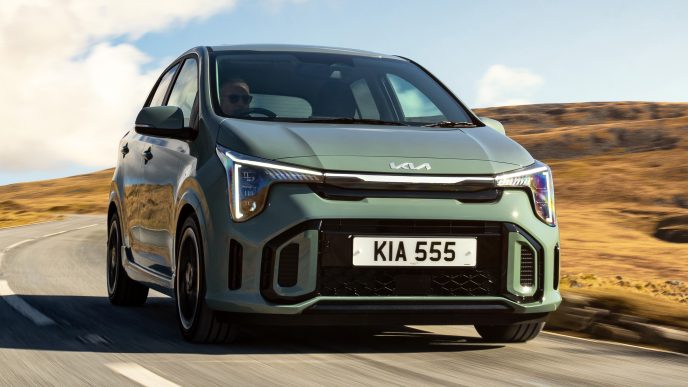Toyota or Honda? RAV4 or CR-V? These are the kinds of choices that make compact SUV buyers lose sleep. With the freshly redesigned 2026 Toyota RAV4 rolling onto the scene, that decision just got tougher. But that’s why we’re here—to end the guessing game by putting the all-new RAV4 head-to-head against the 2026 Honda CR-V Hybrid and determining which of these hybrid heavyweights truly delivers the better deal.
We’ve already explored what makes the 2026 RAV4 tick in detail, but here’s the highlight reel: it’s now hybrid-only, sports bolder styling inside and out, and packs a significantly improved tech suite. The CR-V, although not brand-new—it first arrived in 2022—hasn’t stood still either. Honda has refined it with a larger infotainment screen, wireless charging, and upgraded traction management for AWD variants.
These two nameplates have long defined the compact SUV world, and now, powered by hybrid efficiency, they’re both better than ever. But can Honda’s seasoned CR-V fend off Toyota’s latest contender? Let’s put them through their paces and find out which one deserves your driveway.
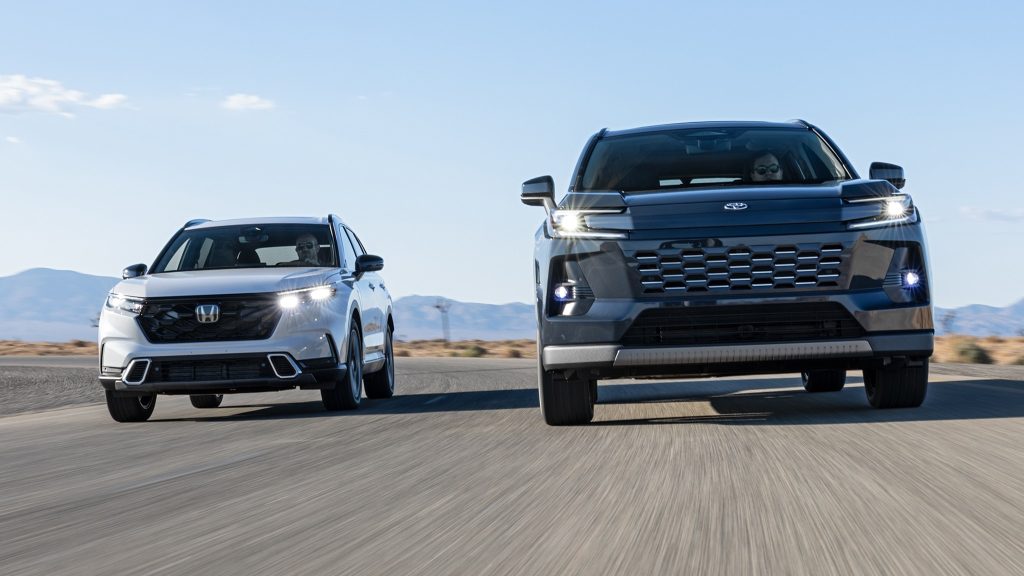
Head-to-Head Shakedown
At the top of Toyota’s 2026 RAV4 lineup sits the Limited trim—essentially the fully loaded version of the “Core” models, meaning it’s neither the rugged Trail nor the sporty XSE. Under the hood is Toyota’s proven 2.5-liter inline-four hybrid setup, sending 236 hp through an all-wheel-drive system powered by three electric motors.
The Honda CR-V Hybrid Sport Touring stands as its counterpart, also featuring standard AWD. Its 2.0-liter naturally aspirated four-cylinder teams up with two electric motors to produce a combined 204 hp.
On paper, interior space is a mixed story. The CR-V offers superior rear legroom—41.0 inches compared to the RAV4’s 37.8—but loses out on cargo space, trailing 34.7 cubic feet to Toyota’s 37.8. Numbers aside, we climbed into both to see how these cabins feel in the real world.
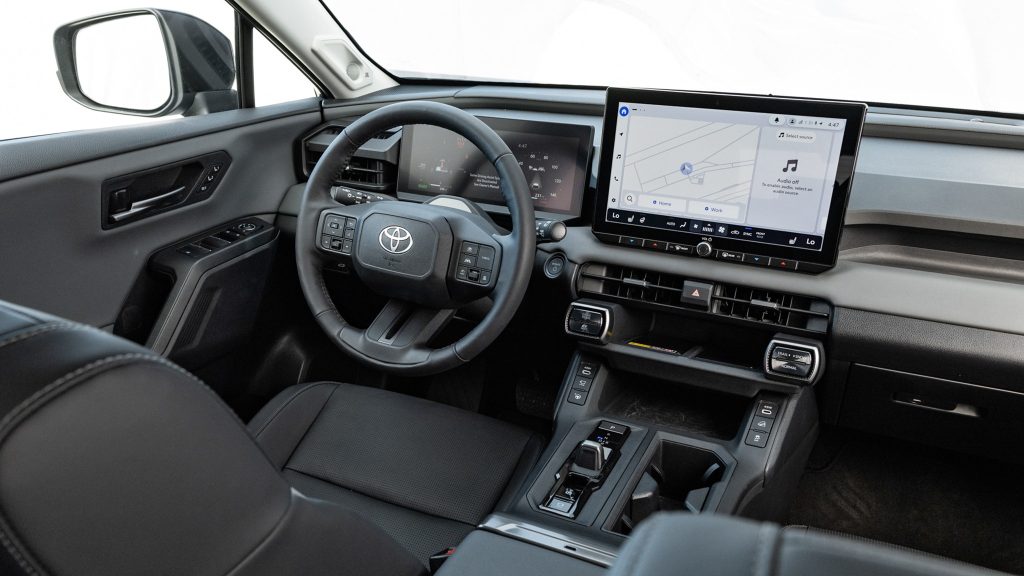
Raving About the RAV4
After several days living with Toyota’s latest RAV4, it’s clear this SUV continues to excel at practicality. The outgoing model was already a master of storage solutions, and the 2026 version keeps that spirit alive with clever cubbies and neatly positioned compartments throughout the front row. There’s a spot for nearly everything—at least until your knees meet the oversized center console. Like in the bZ4X, this bulging structure takes up unnecessary space and can bump against taller drivers’ legs. Some of the interior plastics also feel hollow, and closing the doors or console lid produces a sound more tinny than solid.

The twin screens look sharp and respond quickly, though their “stuck-on” tablet positioning remains divisive. We miss physical buttons for climate control, but Toyota’s revamped infotainment software is a major leap forward. As features editor Scott Evans put it, “[Toyota has] fixed nearly every irritation I had with the old system. It’s finally intuitive—not cutting-edge, but definitely caught up.”
Seat comfort impresses up front, with a naturally upright driving position that suits long trips. Rear passengers get decent padding and recline, but the thick front seatbacks can make the space feel tight. Some testers also noted that knee room is limited when sitting three across.
Cargo practicality is a strong point. The tailgate opens wide to reveal a flat, low load floor and a handy spare tire beneath. There’s enough room for a few full-size suitcases, though overall the cabin feels a touch smaller than the outgoing generation. The dark gray-and-black interior on the Limited trim doesn’t help—hopefully lighter color options bring more airiness.
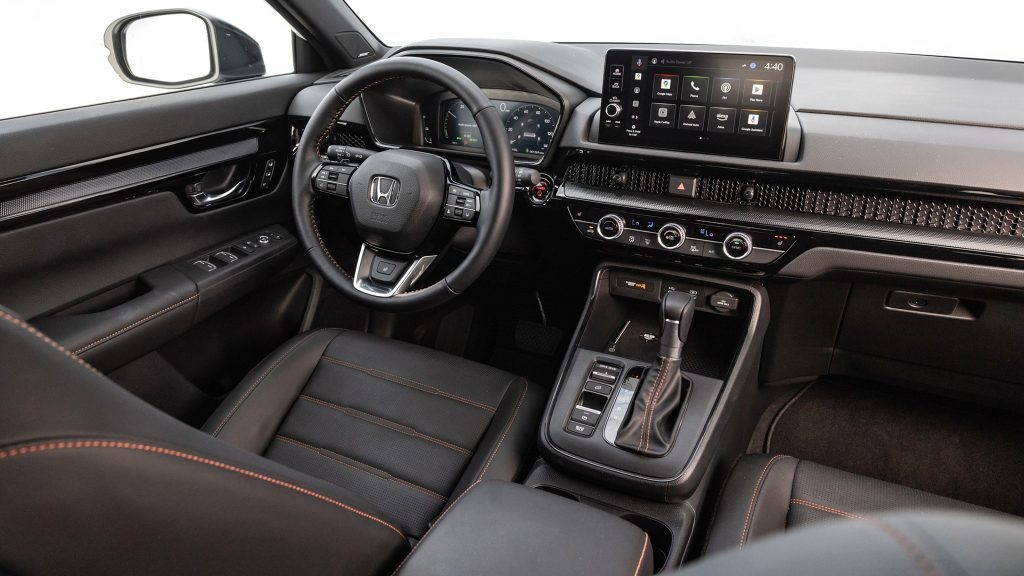
The CR-V’s Glovelike Appeal
Sliding into the Honda CR-V feels instantly familiar. Everything is exactly where you expect it to be, which can be either comforting or dull, depending on your perspective. Honda’s no-nonsense design and intuitive layout mean no learning curve—you simply get in and go.
The infotainment screen still looks modest for 2026, but the interface is clean, responsive, and complemented by real buttons and dials for core functions—something Toyota fans might envy.
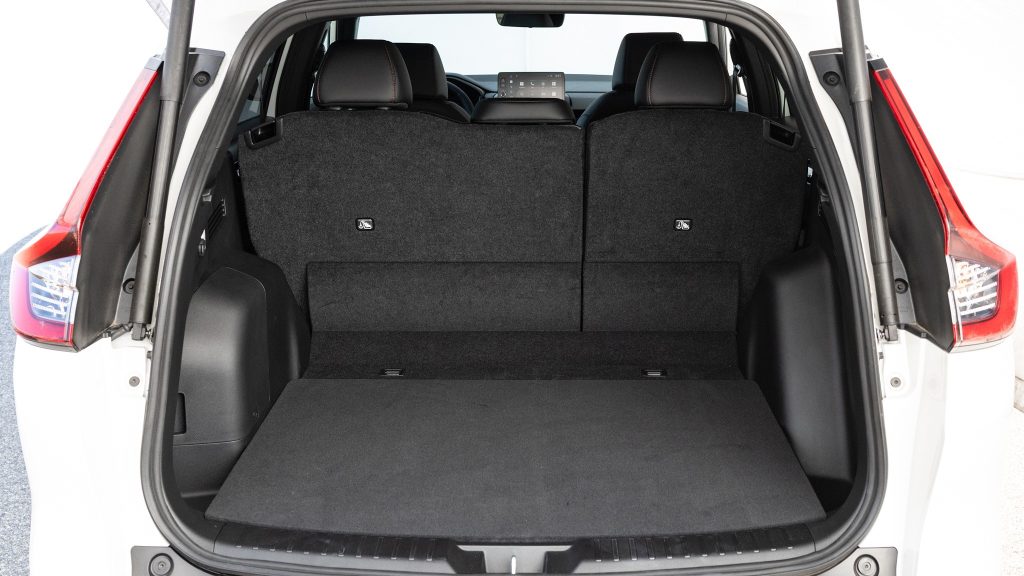
Seat comfort remains a Honda strong suit. Front chairs are supportive, though taller drivers may wish for more knee clearance. The rear bench, however, easily accommodates two adults—or even three in a pinch—offering noticeably more space and light than the RAV4. Wide-opening rear doors, nearly at a full 90 degrees, make entry and exit effortless.
The CR-V’s cargo area is similarly easy to use, with a low lift-over height. However, when the rear seats are folded, a noticeable 4–5-inch step interrupts the flat floor—a quirk of the hybrid model’s fixed cargo design. That uneven surface makes sliding in long or heavy items awkward, especially for anyone planning frequent IKEA runs or weekend getaways.
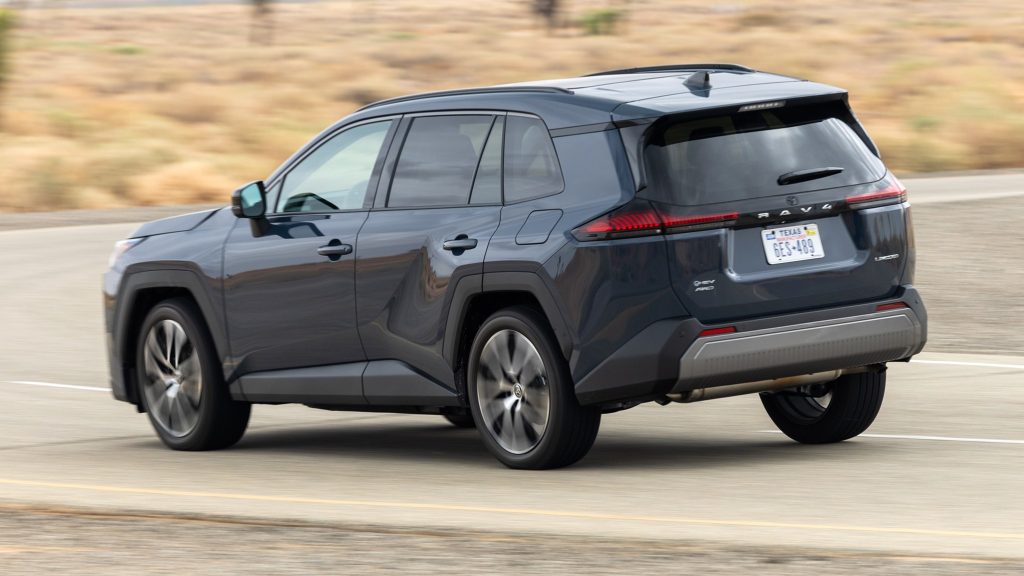
How Do They Drive?
The RAV4’s hybrid system lets it leap off the line with a satisfying burst of energy, though maintaining smooth acceleration in stop-and-go traffic takes some finesse. On the highway, there’s enough muscle for merging, but a few testers wanted more punch overall. Step hard on the gas, and the engine’s gruff, unrefined tone quickly fills the cabin — this isn’t the hybrid for those craving serenity.
Braking response is average, which is exactly what you want in this class — predictable and unobtrusive. The light steering, while accurate, lacks feedback, feeling numb at both center and full lock. Switch into Sport mode, and resistance tightens just enough to make the RAV4 feel a touch more engaging. Combined with its strong low-end torque, it delivers fleeting moments of fun behind the wheel.
The suspension, however, tells another story. It handles smooth pavement confidently, but rougher roads expose its rigidity. The ride turns busy over bumps, with noise echoing through the cabin like a distant drumbeat. It’s as if Toyota borrowed the bones of an old truck and wrapped them in a sleek SUV body. Some drivers might prefer this firmness, but many will wish for a touch more compliance.
Overall, the new RAV4 feels very much like the outgoing one — familiar in both its strengths and flaws. For loyal buyers, that likely won’t matter; the formula still works.
Its driver-assistance tech, though, shows clear progress. The menus are intuitive, and lane centering performs smoothly even in traffic, faltering only on sharply curved sections of highway. A single tap on the stalk now initiates lane changes — a small but welcome upgrade.
That said, Toyota’s attention-monitoring system remains overzealous. It scolded us multiple times to “keep eyes on the road” even when we were. Yes, you can turn it off, but doing so feels like admitting defeat to a car that won’t stop parenting you.
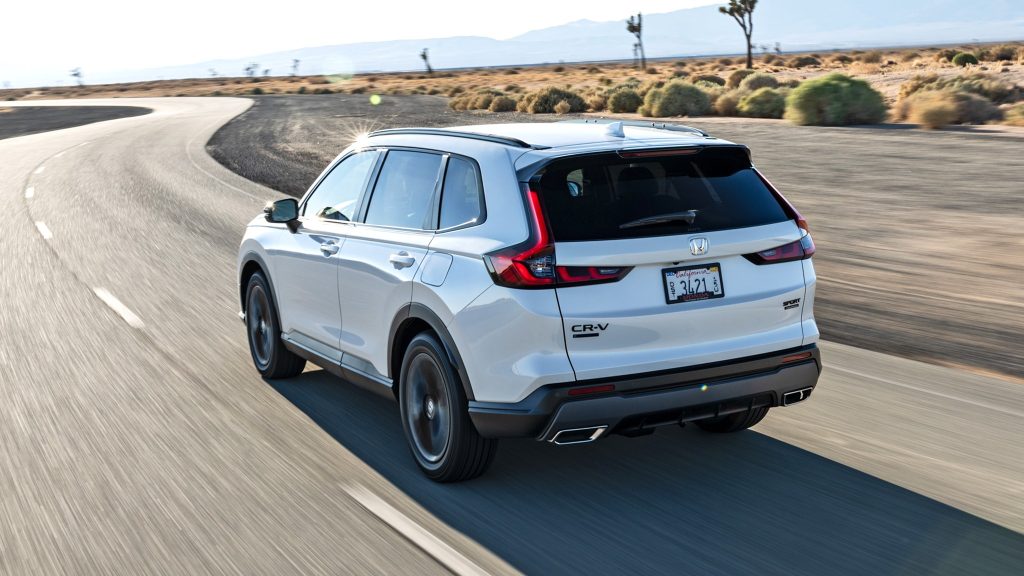
Switching to the Honda CR-V reveals a very different personality. Its hybrid system may lack the RAV4’s low-end snap, but once up to speed, it feels freer, pulling smoothly as it climbs the revs. The transition between gas and electric power is nearly seamless — so subtle that you might forget you’re driving a hybrid at all.
Driving the CR-V feels neat and composed. Hard braking produces only minimal nose dive, and though the steering isn’t brimming with feedback, it’s steady and precise. The suspension hits a sweet spot between comfort and control, ironing out imperfections without ever feeling floaty. A generous tire sidewall on the 19-inch wheels helps, giving the Honda a planted, confident stance that hugs the road with quiet assurance.
There’s something distinctly carlike about the CR-V’s manners. Lower the seat just an inch and add some side bolsters, and you might mistake it for a nimble hatchback rather than an SUV. That sense of compact agility is part of its charm — it feels composed, easy, and light on its feet.
Not everything is perfect, though. The adaptive cruise system mirrors issues we saw in the 2025 Accord, occasionally bouncing the car between lane markers like a bowling ball with too much spin. Oddly, this happened on the same stretch of highway. Maybe it’s the road itself, because on a longer cross-country drive in the Civic Hybrid, the same system worked almost flawlessly.
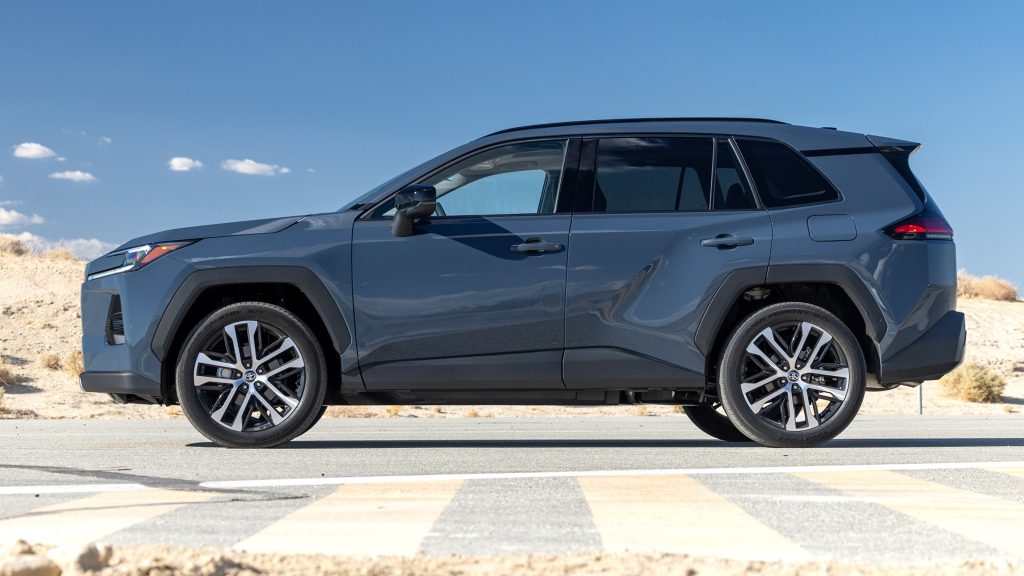
MPGs and MSRPs
Official EPA numbers for the 2026 RAV4 haven’t landed yet, but Toyota estimates the AWD Limited at 44/39/42 mpg city/highway/combined — noticeably stronger than the CR-V Hybrid’s 40/34/37 ratings.
The CR-V Hybrid Sport Touring sits at the top of Honda’s lineup and carries a price tag of around $43,700. That figure includes the full suite of Honda Sensing safety tech, a 9.0-inch touchscreen, premium Bose audio, heated leather seats, a heated steering wheel, and wireless Apple CarPlay and Android Auto.
Toyota hasn’t disclosed exact pricing for the 2026 RAV4, but expects hybrid FWD models — now the base trim — to start in the low $30,000s. For reference, last year’s non-hybrid RAV4 LE began at $31,250, meaning Toyota seems determined to keep the hybrid price in check.
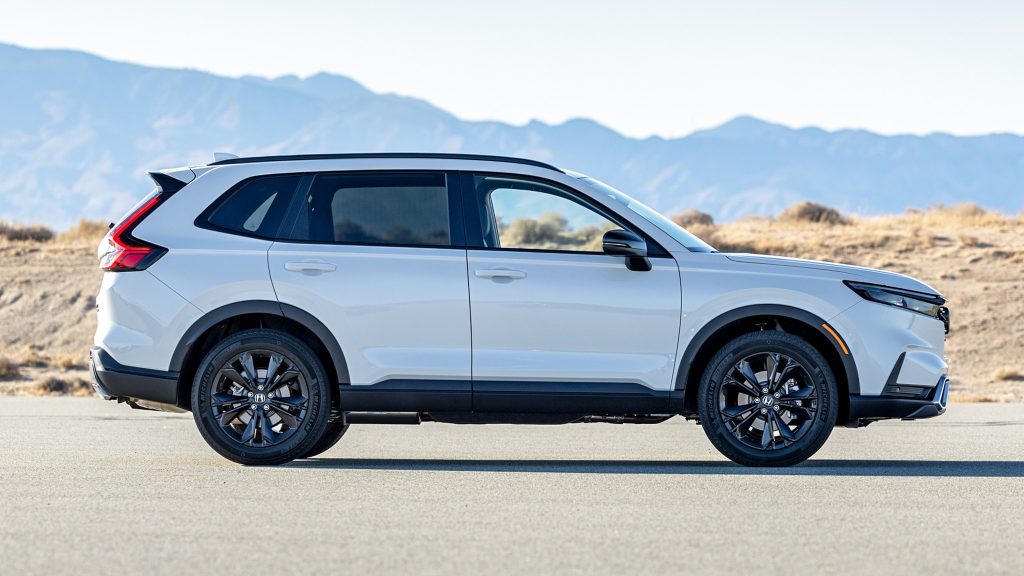
The Limited trim should top out near the CR-V’s price, adding a 12.9-inch touchscreen, JBL sound, ventilated front seats, heated rear seats, and the Toyota Safety Sense 4.0 suite. The outgoing RAV4 Hybrid Limited AWD started at $42,605, so we anticipate a modest bump, putting the two SUVs neck and neck financially.
On paper, these two hybrids are evenly matched. Both are efficient, practical, and packed with features. But the Honda edges ahead in cohesion — it’s more pleasant to drive, its interior is cleaner in layout, and the rear seats feel roomier.
We actually prefer the older RAV4’s cabin design, yet Toyota’s transition to an all-hybrid lineup is a major win for efficiency. Buyers loyal to the brand won’t be scared off by its firmer ride or the occasional coarse detail. The RAV4 now sells more on reliability and economy than refinement, and that strategy will likely keep it near the top of the charts.
Still, for everyday comfort and user-friendliness, the Honda takes the crown.
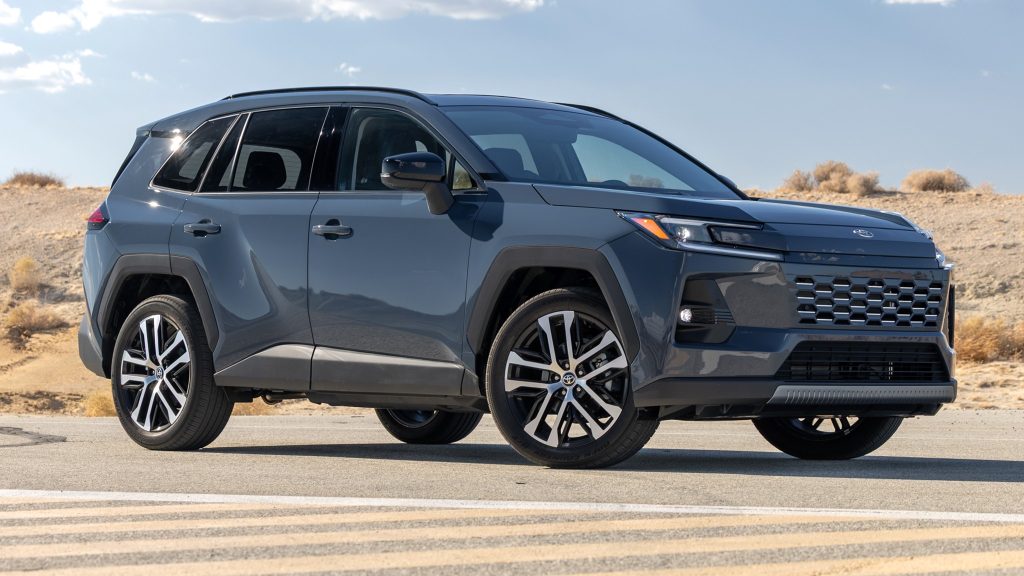
2nd Place: 2026 Toyota RAV4 Limited AWD
Pros
- Fully hybrid lineup
- Excellent fuel economy
- Clever storage solutions
Cons
- Harsh, noisy ride
- Some cheap-feeling interior trim
- Tight rear space
Verdict: Quick and competent, but held back by a brittle ride and budget plastics.
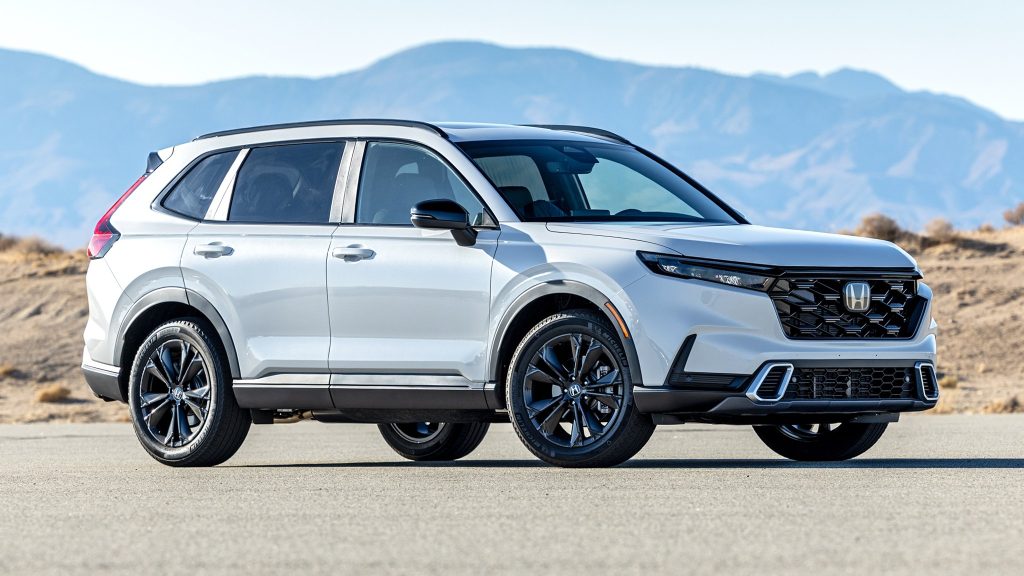
1st Place: 2026 Honda CR-V Hybrid AWD Sport Touring
Pros
- Intuitive physical controls
- Smooth, carlike handling
- Clean, timeless design
Cons
- Smaller infotainment screen
- Flawed adaptive cruise system
- Rear seats don’t fold fully flat
Verdict: A calm, capable daily driver that prioritizes simplicity and comfort — the SUV that just gets everything right.
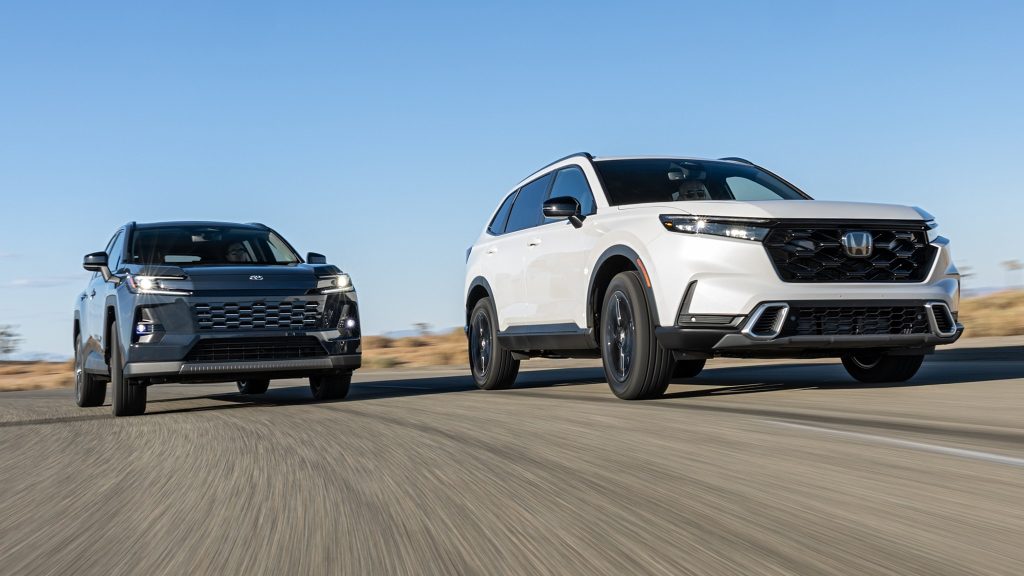
| 2026 Honda CR-V Sport Touring Hybrid AWD Specifications | 2026 Toyota RAV4 Limited AWD Specifications | |
| BASE PRICE | $43,700 | $43,000 (MT est) |
| PRICE AS TESTED | $44,155 | $45,500 (MT est) |
| VEHICLE LAYOUT | Front-engine, front-motor, AWD, 5-pass, 4-door hybrid SUV | Front-engine, front- and rear-motor, AWD, 5-pass, 4-door hybrid SUV |
| Powertrain | ||
| TOTAL POWER | 204 hp | 236 hp |
| TOTAL TORQUE | 247 lb-ft | NA |
| ENGINE | Direct-injected Atkinson-cycle DOHC 16-valve I-4, 145 hp @ 6,100 rpm, 138 lb-ft @ 4,500 rpm | Port- and direct-injected Atkinson-cycle DOHC 16-valve I-4, 183 hp @ 6,000 rpm, 163 lb-ft @ 3,600 rpm |
| DISPLACEMENT | 1,993 cu cm/121.6 cu in | 2,487 cu cm/151.8 cu in |
| COMPRESSION RATIO | 13.9:1 | 14.0:1 |
| MOTORS | Permanent-magnet motor, 181 hp, 247 lb-ft | F: permanent-magnet motor, 134 hp, 153 lb-ft R: permanent-magnet motor, NA hp, 89 lb-ft |
| BATTERY | 1.1-kWh lithium-ion | 1.0-kWh lithium-ion |
| TRANSMISSIONS | 1-speed fixed ratio (elec), 2-speed automatic (gas) | Continuously variable (fr), 1-speed fixed ratio (rr) |
| AXLE/TOP-GEAR RATIO | 4.44:1/9.90:1 (elec) 3.14:1 (gas) | NA |
| Chassis | ||
| SUSPENSION | F: struts, coil springs, anti-roll bar R: multilink, coil springs, anti-roll bar | F: struts, coil springs, anti-roll bar R: multilink, coil springs, anti-roll bar |
| STEERING RATIO | 12.3:1 | 14.4:1 |
| TURNS LOCK-TO-LOCK | 2.4 | 2.6 |
| BRAKES | F: 12.6-in vented disc, 2-piston sliding caliper R: 12.2-in disc, 1-piston sliding caliper | F: 12.0-in vented disc, 2-piston sliding caliper R: 11.1-in disc, 1-piston sliding caliper |
| WHEELS | 7.5 x 19 in, cast aluminum | 7.5 x 20 in, cast aluminum |
| TIRES | Michelin Primacy A/S 235/55R19 101H | Toyo Open Country H/T 235/50R20 100V M+S |
| Dimensions | ||
| WHEELBASE | 106.3 in | 105.9 in |
| TRACK, F/R | 63.4/64.1 in | 62.8/63.4 in |
| LENGTH x WIDTH x HEIGHT | 184.8 x 73.5 x 66.5 in | 181.0 x 73.0 x 66.5 in |
| GROUND CLEARANCE | 8.2 in | 8.1 in |
| APPRCH/DEPART ANGLE | 16.1/21.3 deg | 19.0/23.0 deg |
| TURNING CIRCLE | 37.0 ft | 36.9 ft |
| CURB WEIGHT (DIST F/R) | 3,861 lb (59/41%) | 3,838 lb (55/45%) |
| WEIGHT TO POWER | 18.9 lb/hp | 16.3 lb/hp |
| HEADROOM, F/R | 38.2/38.2 in | 37.9/39.5 in |
| LEGROOM, F/R | 41.3/41.0 in | 41.0/37.8 in |
| SHOULDER ROOM, F/R | 57.9/55.9 in | 57.0/56.4 in |
| CARGO VOLUME BEHIND F/R | 71.8/36.3 cu ft | 70.4/37.8 cu ft |
| PAYLOAD CAPACITY | 850 lb | 1,082 lb |
| TOWING CAPACITY | 1,000 lb* | 3,500 lb* |
| MotorTrend Test Data | ||
| 0-30 MPH | 2.6 sec | 2.3 sec |
| 0-40 MPH | 3.8 sec | 3.6 sec |
| 0-50 MPH | 5.2 sec | 5.1 sec |
| 0-60 MPH | 7.2 sec | 7.0 sec |
| 0-70 MPH | 9.8 sec | 9.3 sec |
| 0-80 MPH | 13.1 sec | 11.9 sec |
| 0-90 MPH | — | 15.0 sec |
| PASSING, 45-65 MPH | 3.9 sec | 3.8 sec |
| QUARTER MILE | 15.8 sec @ 85.9 mph | 15.4 sec @ 91.0 mph |
| BRAKING, 60-0 MPH | 119 ft | 124 ft |
| LATERAL ACCELERATION | 0.82 g | 0.79 g |
| FIGURE-EIGHT LAP | 27.9 sec @ 0.62 g (avg) | 27.6 sec @ 0.63 g (avg) |
| Consumer Info | ||
| AIRBAGS | 10: dual front, f/r side, f/r curtain, front knee | 8: dual front, front side, f/r curtain, driver knee, passenger thigh |
| BASIC WARRANTY | 3 yr/36,000 mi | 3 yr/36,000 mi |
| POWERTRAIN WARRANTY | 3 yr/36,000 mi (8 yr/100,000 mi battery) | 5 yr/60,000 mi (10 yr/150,000 mi battery) |
| ROADSIDE ASSISTANCE | 3 yr/36,000 mi | 2 yr/unlimited mi |
| FUEL CAPACITY | 14.0 gal | 14.5 gal |
| EPA FUEL ECONOMY, CITY/HWY/COMBINED | 40/34/37 mpg | 44/39/42 mpg (mfr est) |
| EPA RANGE | 518 mi | 609 mi (mfr est) |
| RECOMMENDED FUEL | 87 octane | 87 octane |
| ON SALE | Now | December 2025 |




